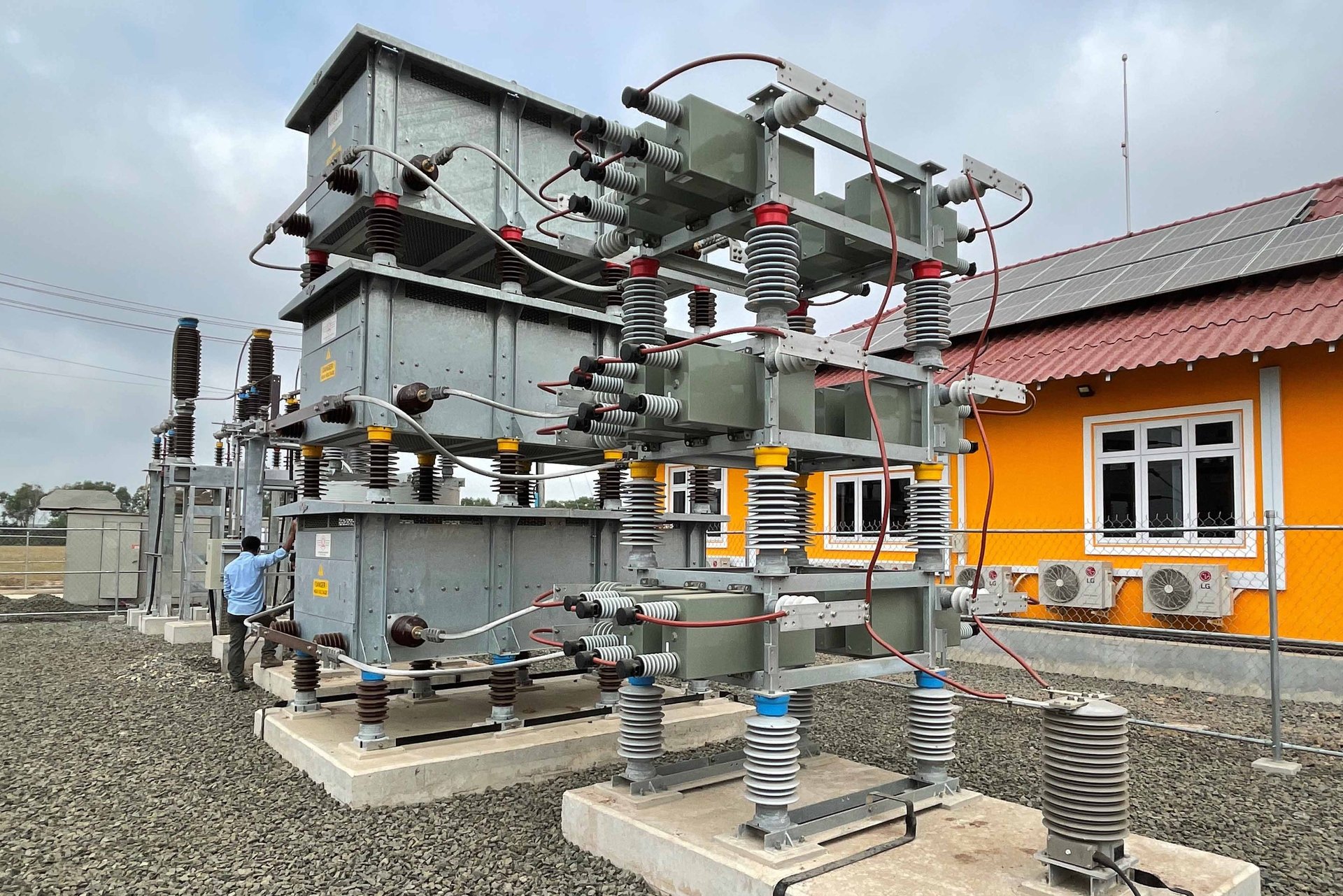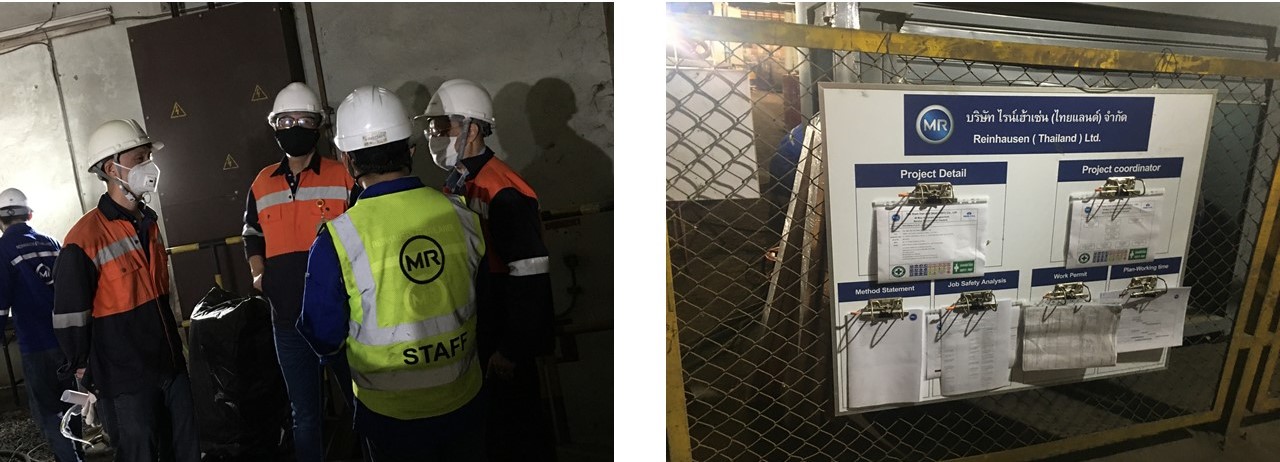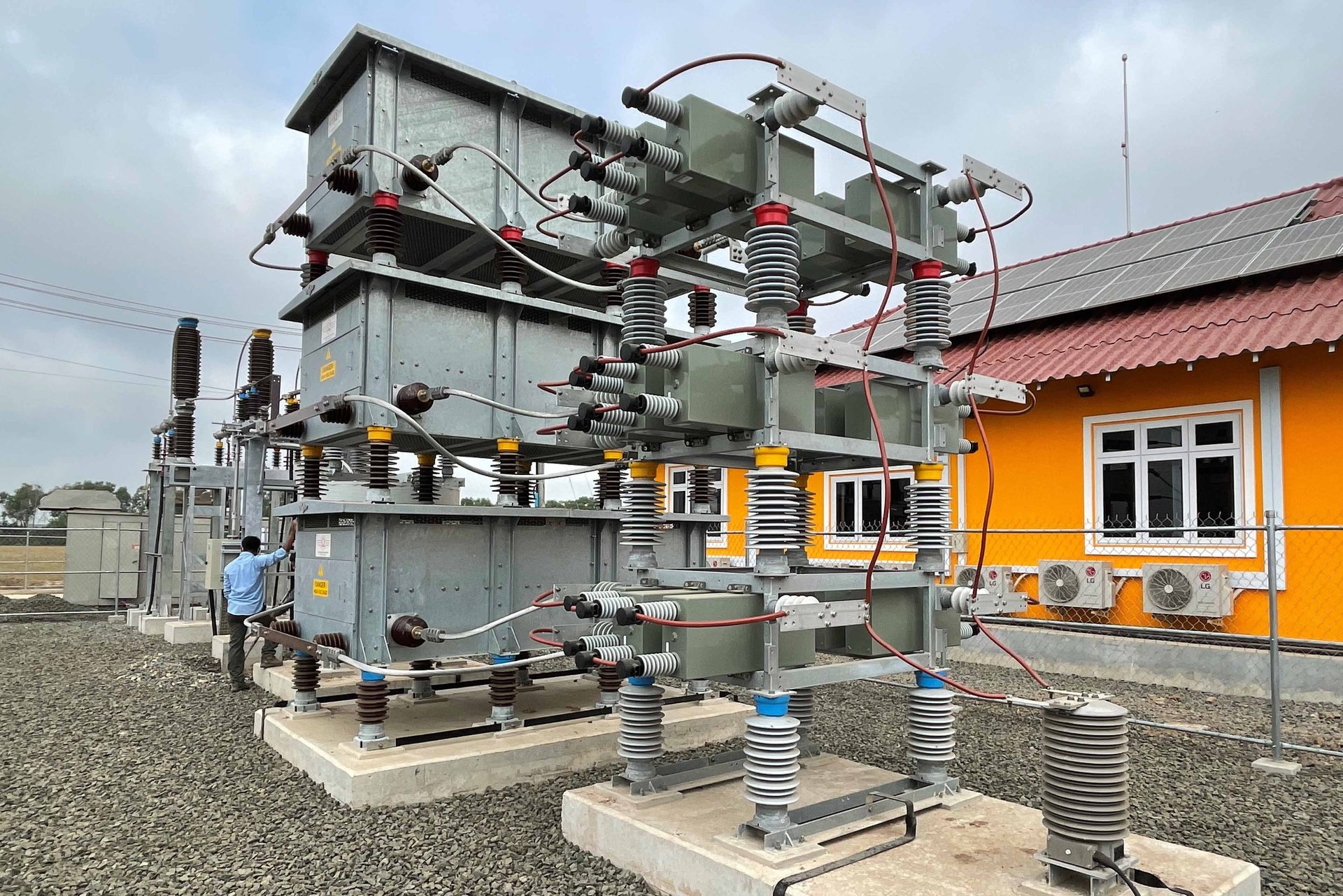
Stable grid thanks to reactive power
21/09/2023
Asian industry uses VRDTs in the fight against fluctuating grids
Voltage fluctuations are problems for industrial companies in all of Southeast Asia. Regulated distribution transformers protect production. The ECOTAP® VPD® takes on the task of regulation.
Voltage fluctuations are a global phenomenon – above all in weaker grids of developing and emerging countries. Unlike fancy grids in industrialized nations, which mainly suffer from the growing volatility of renewable energies, the problem there is usually weak infrastructure. What both grids have in common is that suppliers only regulate on the medium-voltage level. However, fluctuations on the low-voltage level often go unnoticed, as there is no systematic monitoring.
From Taipeh to the rest of Southeast Asia
At the same time, the electronic controllers of systems and machines respond more and more sensitively to these fluctuations. Whether industrial companies can produce efficiently and reliably thus depends more and more on compliance with a specified voltage range. Any deviations automatically lead to interruptions in production processes.
Shihlin Electric & Engineering Corporation, headquartered in Taipeh, supplies customers throughout Southeast Asia with transformers. Joseph Kuo, Senior Vice President (left) and Larry Hsieh, Manager of Material Purchasing Center, want to stabilize the industrial processes with regulated distribution transformers.
Prevent production failures of 25,000 US dollars per month with the VRDT
These are the problems facing the customers of transformer manufacturer Shihlin Electric & Engineering Corporation (SE & EC). Joseph Kuo, Senior Vice President of Shihlin, says, "We deal with the weakest grids in Southeast Asia in Myanmar, Laos and Cambodia. Here, protecting production is highly recommended." Ultimately, however, Kuo sees an enormous demand for technologies for industrial companies in all of Southeast Asia that want to protect themselves against the consequences of voltage fluctuations.
He takes one customer as an example. A company that operates a production facility in a rural part of Vietnam reports extreme instabilities, especially during the summer months. Several times per month, there was a production standstill of ten to 15 minutes due to strong voltage fluctuations. The company estimated the production failures alone at over 25,000 US dollars. In addition, the main tap changer was damaged. Shihlin manager Kuo says, "Thousands of production companies in Southeast Asia have to battle these same problems. This give you an idea of how high the demand is for technology that stabilizes the internal company grids."
Shihlin Electric & Engineering Corporation meets this demand with distribution transformers. Back in September 2017, Reinhausen delivered an ECOTAP VPD. The end customer was an industrial company in Myanmar that had ordered a regulated 1.5 MVA transformer from Shihlin Electric & Engineering Corporation. Larry Hsieh, Manager of Material Purchasing Center at Shihlin, explains the decision for the Reinhausen tap changer. "We were initially considering tap changers from a manufacturer from Shanghai. The short distance and language advantage appeared very attractive at first. As a buyer, of course, cost is the most important thing. Here, the ECOTAP VPD is absolutely competitive and it's also a product from the world's leading OLTC manufacturer. Together with the brand strength of Reinhausen, the reliability and quality of the products as well as the strong service support, this was the decisive factor in our decision."
10/08/2022
Climate change, energy revolution and the future of power grids?
10/08/2022
PQ goes upnorth – Maschinenfabrik Reinhausen's power quality division provides 21 kV harmonic filter system into Norway

Maintenance free and worry free for many years - thanks to OLTC retrofit
New VACUTAP® VM® ensures Tata Steel Manufacturing operational reliability for years to come
What do you do if your transformer is in good condition, but the on-load tap-changer (OLTC) is at the end of its service life after more than 4,000,000 switching operations in an arc-furnace application? This was the question facing SISCO Plant, a company of the Tata Steel Manufacturing (Thailand) group. The answer from Reinhausen (Thailand) Ltd. was the on-site installation of a maintenance-free VACUTAP® VM® in combination with a general refurbishment of the 42 MVA furnace transformer from the Italian manufacturer Tamini.
In the first step of the work, the oil was drained from the OLTC and transformer so that the manholes could be opened and the heart of the transformer - the on-load tap-changer - could be accessed. Then the actual replacement started: The old OILTAP® M including drive shafts and motor-drive unit was dismantled, and the new VACUTAP® VM® with motor-drive unit was installed. Moreover, the Reinhausen Thailand service team replaced the pressure relief device (PRD) of the transformer with a new and reliable unit from CEDAPSE, cleaned the oil conservators and the piping, and replaced the gaskets of all high-voltage bushings. The oil was then reconditioned, and the transformer was refilled under vacuum. Finally, our specialists carried out mechanical and electrical test operations over the entire control range, conducted an oil analysis, a resistance measurement, and ratio and insulation tests, and prepared the service report with all the important details for the customer.
The average temperature of 45 degrees Celsius in the transformer room made the colleagues sweat quite a bit. And no crane could be set up in the transformer room, so moving all of the heavier components had to be managed by chain block and muscle power. And due to the leaks of the bushings, the colleagues had to clean the transformer extensively. But thanks to perfect coordination to carry out the work in parallel while observing all applicable safety regulations, the colleagues mastered the numerous challenges perfectly and were able to complete the project on time.
A big surprise was the visit of the Vice President of Tata Steel (Thailand), who was able to get a personal impression of our professional and high quality work on site. This positive impression in combination with further discussions on site convinced Tata Steel to award Reinhausen (Thailand) Ltd. contracts for two further projects in 2021 and 2022.
Xem thêm →

Solar Power Plant in Cambodia
Standard-compliant connection conditions of a Solar Power Plant in Cambodia
MR-Power Quality supported our partner company Pestech International Bhd. in Ma-laysia with the standard-compliant integration of a solar power plant with 20 MWp in the distribution network of the Bavet region in Cambodia.
During the project planning phase, a network analysis and extensive calculations were used to develop a compensation concept for the solar inverters in order to operate the solar power plant in accordance with the applicable connection standard, taking into account all possible switching states.
The assembly of the individual components produced by our European suppliers as well as the commissioning was accompanied remotely with the support of the PQ special engineers from Germany. This approach also served as an endurance test for the com-munication tools that were successfully introduced and tested during the Corona Pan-demic.
The commissioning of the system and the required proof of performance were success-fully completed in January 2022. MR-PQ thus creates another valuable reference for customer-specific solutions in remote regions of the world.
For more than 20 years, MR's PQ Power Quality department has designed customized filter and compensation systems to ensure clean low, medium and high voltage networks as well as extra high voltage networks worldwide. The main areas of activity are the reduction of harmonics, the compensation of reactive power, voltage stabilization and, increasingly, ac-tive power energy management in public and industrial distribution networks.
Xem thêm →

Asian industry uses VRDTs in the fight against fluctuating grids
Voltage fluctuations are problems for industrial companies in all of Southeast Asia. Regulated distribution transformers protect production. The ECOTAP® VPD® takes on the task of regulation.
Voltage fluctuations are a global phenomenon – above all in weaker grids of developing and emerging countries. Unlike fancy grids in industrialized nations, which mainly suffer from the growing volatility of renewable energies, the problem there is usually weak infrastructure. What both grids have in common is that suppliers only regulate on the medium-voltage level. However, fluctuations on the low-voltage level often go unnoticed, as there is no systematic monitoring.
From Taipeh to the rest of Southeast Asia
At the same time, the electronic controllers of systems and machines respond more and more sensitively to these fluctuations. Whether industrial companies can produce efficiently and reliably thus depends more and more on compliance with a specified voltage range. Any deviations automatically lead to interruptions in production processes.
Shihlin Electric & Engineering Corporation, headquartered in Taipeh, supplies customers throughout Southeast Asia with transformers. Joseph Kuo, Senior Vice President (left) and Larry Hsieh, Manager of Material Purchasing Center, want to stabilize the industrial processes with regulated distribution transformers.
Prevent production failures of 25,000 US dollars per month with the VRDT
These are the problems facing the customers of transformer manufacturer Shihlin Electric & Engineering Corporation (SE & EC). Joseph Kuo, Senior Vice President of Shihlin, says, "We deal with the weakest grids in Southeast Asia in Myanmar, Laos and Cambodia. Here, protecting production is highly recommended." Ultimately, however, Kuo sees an enormous demand for technologies for industrial companies in all of Southeast Asia that want to protect themselves against the consequences of voltage fluctuations.
He takes one customer as an example. A company that operates a production facility in a rural part of Vietnam reports extreme instabilities, especially during the summer months. Several times per month, there was a production standstill of ten to 15 minutes due to strong voltage fluctuations. The company estimated the production failures alone at over 25,000 US dollars. In addition, the main tap changer was damaged. Shihlin manager Kuo says, "Thousands of production companies in Southeast Asia have to battle these same problems. This give you an idea of how high the demand is for technology that stabilizes the internal company grids."
Shihlin Electric & Engineering Corporation meets this demand with distribution transformers. Back in September 2017, Reinhausen delivered an ECOTAP VPD. The end customer was an industrial company in Myanmar that had ordered a regulated 1.5 MVA transformer from Shihlin Electric & Engineering Corporation. Larry Hsieh, Manager of Material Purchasing Center at Shihlin, explains the decision for the Reinhausen tap changer. "We were initially considering tap changers from a manufacturer from Shanghai. The short distance and language advantage appeared very attractive at first. As a buyer, of course, cost is the most important thing. Here, the ECOTAP VPD is absolutely competitive and it's also a product from the world's leading OLTC manufacturer. Together with the brand strength of Reinhausen, the reliability and quality of the products as well as the strong service support, this was the decisive factor in our decision."
Xem thêm →


